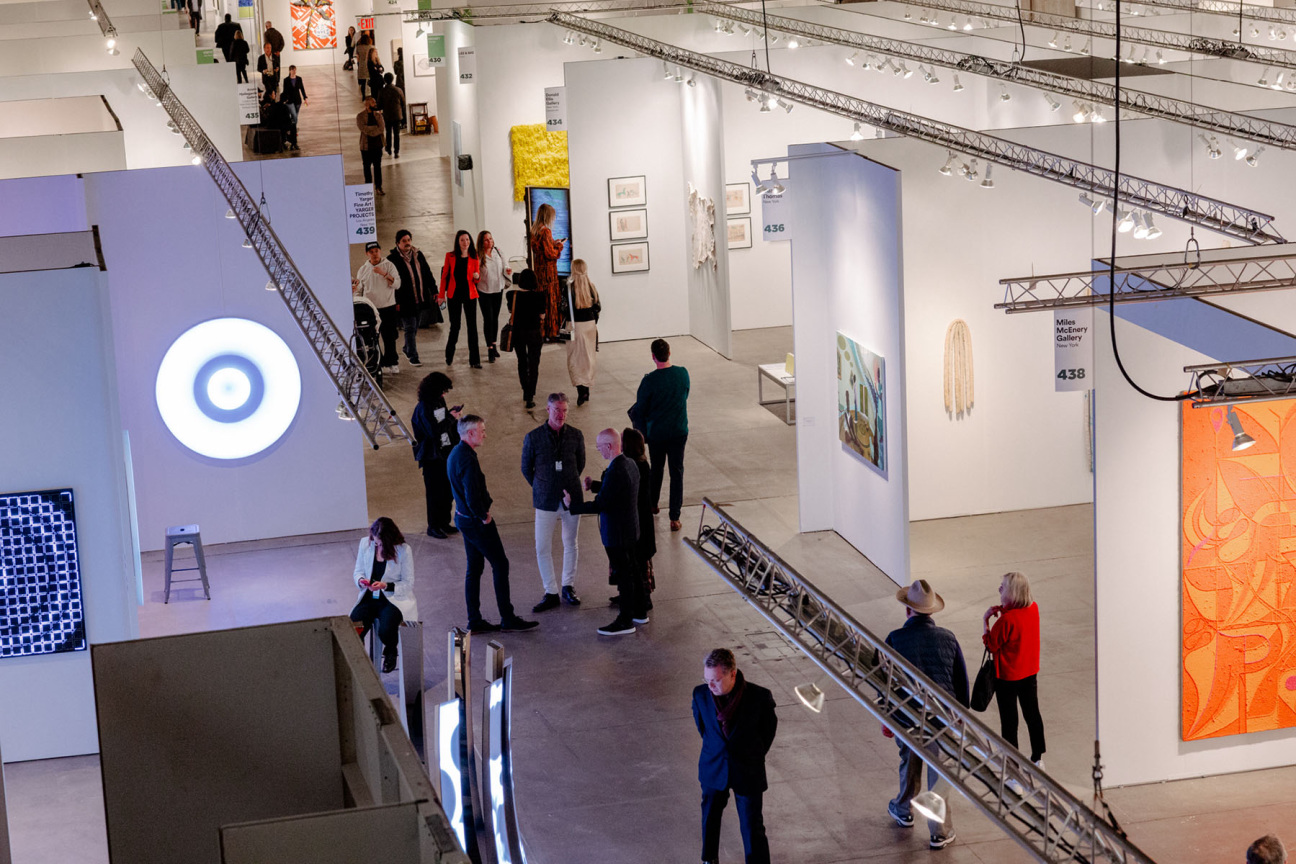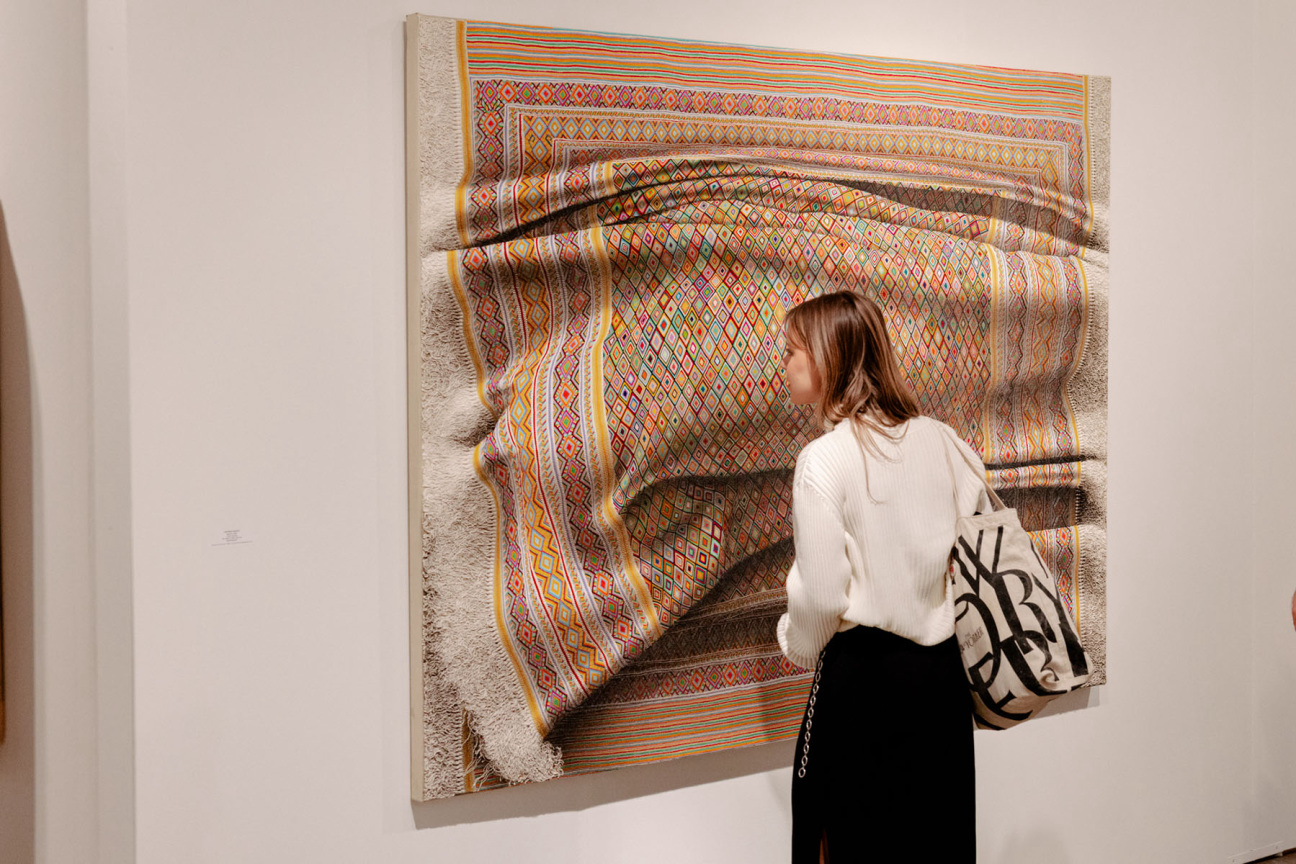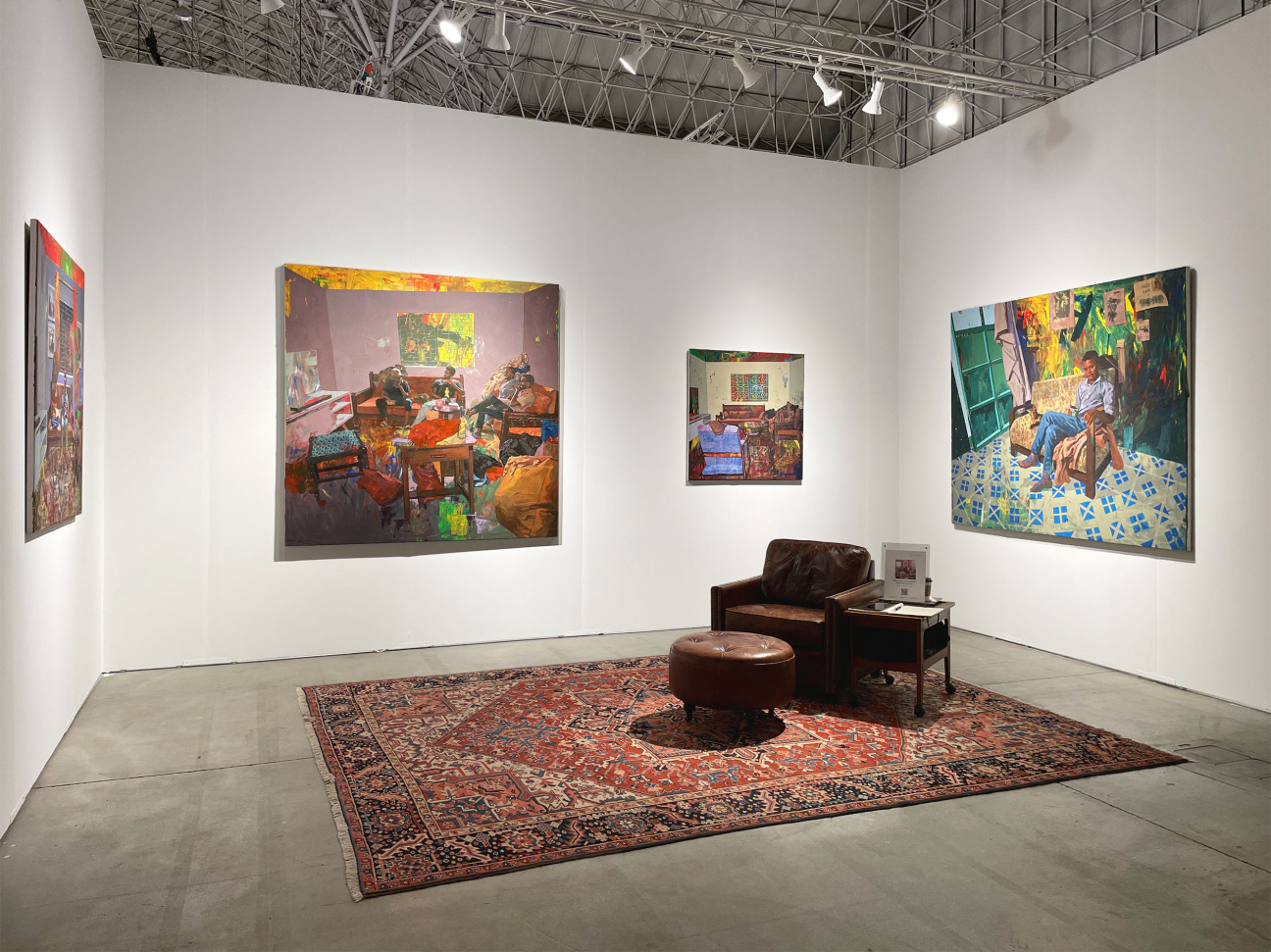
“I think there's something in the soul of Expo,” says Montague Hermann, founder of New York’s Montague Contemporary. EXPO Chicago has always been one of his favorite art fairs. It's that "soul"—the low key energy, enthusiasm, audience appreciation, the local-mindedness—has made it a favorite of the art world and laypeople alike. But in 2023, the fair was acquired by Endeavor and Frieze—coastal big wigs, if you will. What does that signal for EXPO's future?
Taking place April 11-14 at Chicago’s Navy Pier, EXPO serves as the largest art market gathering of its kind in the Midwest. For the average visitor, this year’s edition might feel much like EXPOs of years past. But the fair's acquisition has manifested in subtle changes apparent primarily to insiders and regulars, including a new layout.

For Tony Karman, director of EXPO CHICAGO, the acquisition reflects the fair’s strong foundation that has been painstakingly built since its founding in 2012. “We are deeply proud to be a part of Frieze,” Karman said by email. “Since the acquisition announcement in July of 2023, we have been working closely with the Frieze teams to integrate staff, programming, and operations.”
Like in past years, the exhibition hall features a core roster of exhibiting galleries plus four satellite sections (Special Exhibitions, Editions + Books, Profile, Exposure). But this year, the delineation of these four sections presents a more guided experience for viewers. Past editions of the fair always featured book and print sellers or emerging galleries relegated to the main hall's fringes, but in 2024, these sections are better oriented within the flow of the space.
This integration has also led to a streamlining of certain time-honored aspects of the fair—most notably a reduction in the number of interactive installations tailored to casual viewing audiences (rather than art advisors and institutional representatives), and a slight reduction in the geographical range of featured galleries. Last year featured galleries from 36 countries and 90 cities; this year included galleries from 29 countries and 75 cities.

My memories of past iterations are characterized by what felt like a space jammed wall-to-wall with galleries of all stripes. Sometimes, it was too much—but for the visually hungry visitor, this made for a delightfully maximalist sensory experience. There was always something to be found to fit one's taste. This year's EXPO feels slightly pared-back—at times, it even felt reminiscent of the fair’s early years, before it became a national, and even international, art world locus.
But despite the small changes intended to elevate the fair’s status in the art fair circuit, many gallerists who have shown at EXPO consistently over the years see the prevalence of casual audiences as a critical component of what draws them to the fair. “That's a distinction between [EXPO] and a lot of the other Frieze events that I've been at,” says Hermann, whose booth featured an array of mixed media works by Kenyan artist Elias Mung'ora and South African artist Athi-Patra Ruga. “It’s not about looking, it’s about being seen. This fair is nice because people actually come to look.”

EXPO has always been a ripe breeding ground that allowed emerging galleries the rare opportunity to break into the hallowed and insular art fair ecosystem. For those that do manage this feat, the rewards are high. Take AMFM Gallery, a beloved Chicago-based gallery. In 2023 pre-acquisition, AMFM partnered with the South Side Community Arts Center, the country’s first Black art museum, to exclusively exhibit work by Black artists. “It was our first time getting our foot in the door,” says AMFM founder Ciera McKissick. “There was so much Black art at the fair last year, but the people selling it weren't necessarily Black. I felt really important [to be there] for visibility purposes.”
This year, the gallery has a booth of its own in the Special Exhibitions section, using this elevated platform to exhibit work by Andrea Coleman, Marcelo Eli Sarmiento, Modou Dieng Yacine, and Roland Santana. All are local to Chicago and first-time artists at EXPO.
“Being able to connect artists to collectors and see their careers grow vastly has been really, really special,” adds McKissick. “It's been really beautiful to be able to bring them to a fair of this caliber.”










 in your life?
in your life?

